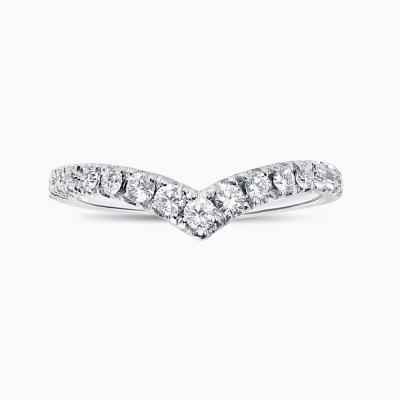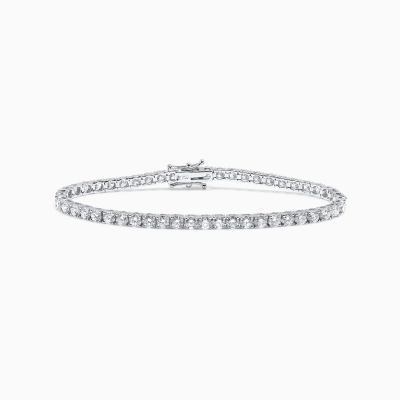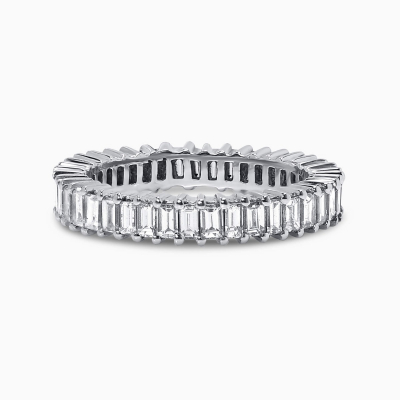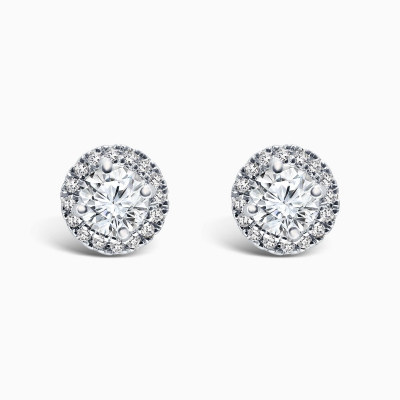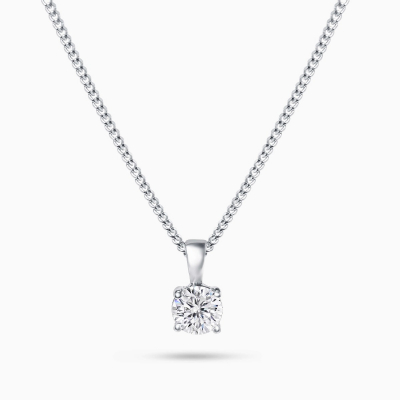USD
/
USD
/
Shipping to:
Currency:
PEAR SHAPE DIAMONDS
The Pear Shape which is also called the Pendeloque or Teardrop, is unlike any other cut seen in the diamond world. It’s graceful distinctive lines embody the values of femininity and sophistication, are instantly recognizable, and very much treasured by those who love to wear unique jewelry.
The Pear Shape diamond is widely recognized as a hybrid combination of the Marquise Cut and the Round Brilliant with one end rounded and one end pointed. This beautiful combination creates a diamond that is a real head turner, full of fire and sparkle with way more dramatic effect that a traditional Round Brilliant.
A Pear Shape diamond can be worn whichever way you desire, however many ladies with shorter fingers love to wear the tip of the pear pointing towards their fingernails as this has the illusion of elongating the fingers and making their hands and fingers look longer.
Here we take a closer look at the unique beauty of Pear Shape diamonds.
01
THE HISTORY OF PEAR SHAPE DIAMONDS
The creation of Pear Shape diamonds dates back to the 1400s when the cut was first designed by a Flemish diamond cutter Lodewyk van Berquem of Bruges, who also invented the diamond polishing wheel also called the scaif. Using this invention in the development of the Pear Cut diamond, Van Berquem pioneered the use of symmetry in faceting within diamonds to maximize light reflection, fire, and so fashioned the Pear Shape.
However it was not until the 1700s that the currently seen brilliant style of Pear Shape diamond came to the marketplace.
02
CHARACTERISTICS OF PEAR SHAPE DIAMONDS
As previously mentioned, the Pear Shape diamond is a unique shape created through the combination of the Round Brilliant and the Marquise Cut diamond. As it’s name suggests, the Pear Shape diamond resembles the shape of a pear with a rounded end and a tapering point. Some also describe it as resembling a teardrop.
Pear Shape diamonds ideally exhibit 58 facets although the number of pavilion facets may range from 4 to 8. The preferred length to width ratio of is between 1.50 and 1.70. These ratios can be varied to suit personal taste, but what must be maintained with a Pear Shape diamond is good symmetry to maximize brilliance and sparkle and very importantly, to avoid the “bow tie effect” to which this shape of pear diamond can be prone if not correctly cut. This “bow-tie effect” occurs when the light that passes through casts a shadow across the central facets of the diamond. This shadow effect can be decreased by altering the pavilion depth, and changing the angles of the facets and table to allow better diffusion of light within the central area of the diamond.
You may also find some Pear Shape diamond that are cut with what is termed a "French tip," This is in replacement of the large bezel facet at the point with upper girdle and star facets. Pear Shape diamonds can also be made to appear more angular with the inclusion of what is referred to as “high shoulders”.

03
PROS AND CONS OF PEAR SHAPE DIAMONDS
PROS
- Pear Shape diamonds are more competitively priced than Round Brilliant Cut diamonds due to thief being less waste in the cutting process.
- They are very flattering for a wearer with short or wide fingers as the point draws the eye along the diamond and finger so having the illusion of elongating the finger.
- The Pear Shape diamonds are perfect for use in earrings and pendants as their droplet shape lends itself beautifully to these pieces of jewelry.
CONS
- Being the weakest part of the shape, the pointed tip of Pear Shape diamonds can be susceptible to chipping and other damage. Always look for a Pear Shape diamond that has a prong at the tip to provide protection.
- Some Pear Shapes diamonds can show exaggerated dark facets within the diamond which are called the “bow-tie effect” and are not desirable.
- Pear Shape diamonds can show more color at the point of the tip in comparison to other shapes of diamonds. Therefore we advise selecting a high color grading when choosing a Pear Shape diamond of H and above.
- In comparison to other shapes such as the Princess Cut or the Round Brilliant, there are fewer designs of jewelry that lend themselves to Pear Shape diamonds, therefore your choice may be limited.
04
DO PEAR SHAPE DIAMONDS REPRESENT GOOD VALUE FOR MONEY
The answer is YES, they can cost up to 20% (or dependent upon size and carat weight even more than 20%) less than shapes such as the Round Brilliant. And another plus point is that due to their elongated shape, Pear Shape diamonds can give the illusion of being significantly larger than a Round Brilliant diamond of the same weight.
So if you’re looking for a piece of diamond ring with a unique touch then Pear Shape diamonds are the perfect choice for you. They sit well within a solitaire setting, with baguettes or as part of a halo setting with other accent diamonds. Pear Shape diamonds are a truly versatile gemstone that really do have the wow factor!
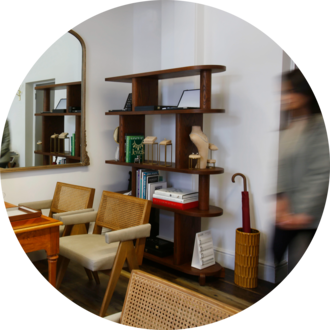
WHERE NEXT?
Looking to buy a round loose diamond?
Book a visit to our New York, Los Angeles or Dallas showrooms or search through our diamonds inventory online.
Contact us:+1 (646) 898 2098

WHERE NEXT?
Looking to buy a round loose diamond?
Book a visit to our New York, Los Angeles or Dallas showrooms or search through our diamonds inventory online.
Contact us:+1 (646) 898 2098






